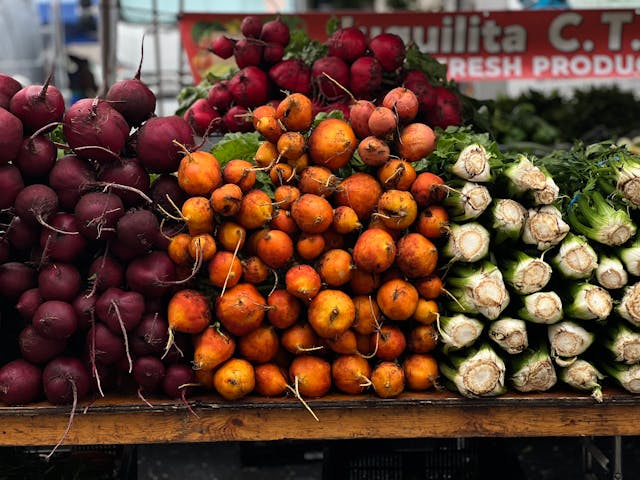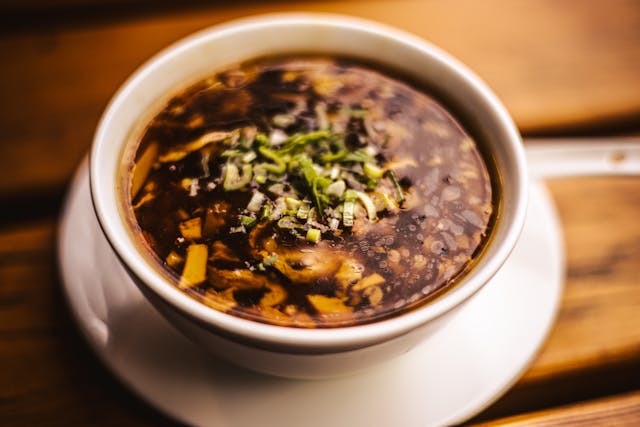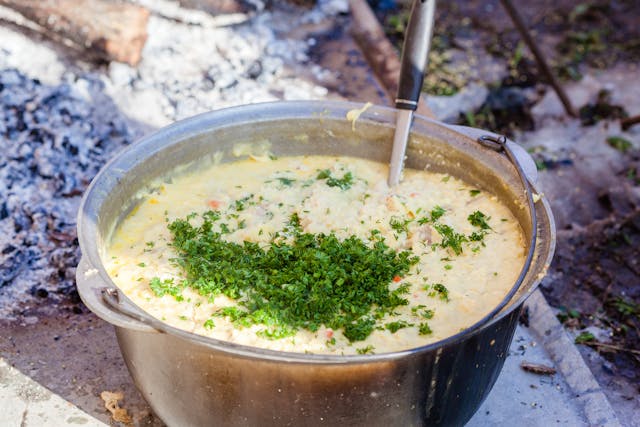Barley soup is a timeless classic that satisfies the soul while offering countless health benefits. In its vegan form, this comforting dish eliminates all animal-derived ingredients, ensuring it aligns with plant-based diets and ethical eating practices. Packed with hearty vegetables, nutritious grains, and a medley of spices, vegan barley soup is not only delicious but also incredibly versatile.
Whether you’re preparing a cozy meal for a chilly evening or seeking a wholesome lunch option, vegan barley soup is a go-to choice. Its simplicity, affordability, and nutrient-dense profile make it a favorite among both beginner and seasoned cooks. In this article, we’ll dive into every aspect of creating and enjoying this soup—from selecting ingredients to mastering cooking techniques, and even exploring creative variations.
The Ingredients
A perfect bowl of vegan barley soup begins with thoughtfully chosen ingredients. Every element in the recipe contributes to the soup’s texture, flavor, and nutritional value. Here’s a comprehensive look at what you’ll need:
Essential Ingredients for Vegan Barley Soup
- Barley
- Type: Pearl barley is the most commonly used for its soft texture and fast cooking time. Hulled barley, a less processed option, is also excellent but requires a longer cook time.
- Role: Barley adds a chewy texture and acts as the heart of the soup, providing a rich, nutty flavor.
- Vegetables
- Onions: Provides a sweet, aromatic base when sautéed.
- Carrots: Adds natural sweetness and color.
- Celery: Introduces a subtle earthy flavor.
- Garlic: Boosts flavor with a hint of spice.
- Tomatoes: Fresh or canned tomatoes bring acidity and depth.
- Broth
- Use a high-quality vegetable stock or homemade broth for a robust flavor. Look for low-sodium options if you want to control the saltiness.
- Herbs and Spices
- Bay Leaves: Adds an earthy aroma.
- Thyme: Complements the barley with its mild, minty notes.
- Paprika: For a touch of smoky warmth.
- Salt and Pepper: Essential for seasoning.
- Olive Oil
- Used for sautéing vegetables, olive oil provides a smooth, rich taste. Coconut or avocado oil are also suitable alternatives.
- Water
- Adding water alongside the broth helps achieve the desired consistency without overpowering the soup with strong flavors.

Optional Add-Ons for Extra Flavor and Nutrition
- Leafy Greens
- Spinach, kale, or Swiss chard can be stirred in toward the end of cooking for added nutrients and freshness.
- Beans and Legumes
- Chickpeas or white beans add protein and make the soup more filling.
- Mushrooms
- A handful of sliced mushrooms can introduce a savory, umami depth.
- Root Vegetables
- Turnips, parsnips, or sweet potatoes can bring extra sweetness and complexity.
- Fresh Herbs for Garnish
- Parsley, dill, or cilantro elevate the presentation and taste of the final dish.
Tips for Ingredient Preparation
- Barley Rinse: Rinse the barley thoroughly under cold water to remove excess starch and prevent clumping during cooking.
- Vegetable Chopping: Cut all vegetables uniformly to ensure even cooking.
- Stock Choice: If using store-bought stock, taste it first to avoid overly salty soup.
By gathering these ingredients, you’ll lay the foundation for a hearty, flavorful vegan barley soup. In the next section, we’ll guide you through the preparation process to ensure a perfect bowl every time.
Preparation Techniques
Creating a delicious vegan barley soup is as much about the process as it is about the ingredients. In this section, we’ll break down the steps to ensure you achieve a flavorful and hearty result every time.
Step-by-Step Guide to Making Vegan Barley Soup
1. Prepare Your Ingredients
- Wash and Chop Vegetables: Peel and dice carrots, onions, and celery into even pieces. Mince garlic for a more even distribution of flavor.
- Rinse Barley: Place barley in a fine-mesh sieve and rinse thoroughly under cold water. This removes any dust or excess starch, ensuring a clean and non-gummy texture.
2. Sauté the Aromatics
- Heat Oil: In a large pot, heat 2 tablespoons of olive oil over medium heat.
- Cook Vegetables: Add onions, carrots, and celery. Sauté for 5–7 minutes, stirring occasionally, until the vegetables become tender and the onions are translucent.
- Add Garlic: Stir in minced garlic and cook for another 1–2 minutes until fragrant. Be careful not to burn it.
3. Incorporate the Liquids and Barley
- Deglaze the Pot: Add a splash of vegetable broth or water, scraping up any bits stuck to the bottom of the pot. This step enhances the flavor.
- Add Barley and Tomatoes: Stir in the rinsed barley and tomatoes (fresh or canned), ensuring even distribution.
- Pour in Broth: Add the vegetable stock and additional water if needed to achieve your desired soup consistency.
4. Season and Simmer
- Add Herbs and Spices: Drop in bay leaves, thyme, paprika, salt, and pepper. Stir well to combine.
- Bring to a Boil: Turn the heat to high and bring the soup to a boil.
- Simmer: Reduce the heat to low, cover the pot with a lid, and simmer for 35–45 minutes. Stir occasionally to prevent sticking, especially if you’re using pearl barley.
5. Check and Adjust
- Test the Barley: The soup is ready when the barley is tender but still slightly chewy. Adjust the cooking time as needed.
- Taste and Season: Taste the broth and adjust the seasoning with more salt, pepper, or herbs.
6. Final Additions
- Optional Greens: If you’re adding spinach, kale, or other leafy greens, stir them in during the last 5 minutes of cooking. They’ll wilt quickly without losing their vibrant color.
- Beans or Legumes: Add cooked beans or chickpeas at the end to warm through.
Pro Tips for Best Results
- Don’t Overcook Barley: Keep an eye on the barley to avoid it becoming mushy.
- Balance the Consistency: If the soup becomes too thick during cooking, add a little more broth or water.
- Remove Bay Leaves: Always remove bay leaves before serving to avoid bitterness or a tough texture.
Common Variations During Preparation
- Creamier Texture: Blend a portion of the soup with an immersion blender and mix it back in. This gives a creamy consistency without adding dairy.
- Smoky Flavor: Add smoked paprika or a dash of liquid smoke for a bolder, smoky profile.
- Spicy Kick: Stir in red pepper flakes or a dash of cayenne for heat.
With these steps, you’re now ready to create a delicious pot of vegan barley soup. In the next section, we’ll explore exciting variations that allow you to put your unique spin on this classic dish.
Variations
One of the best things about vegan barley soup is its versatility. You can easily customize it to reflect global cuisines or incorporate your favorite ingredients. In this section, we’ll explore creative variations and personal touches to elevate your barley soup.

Global Variations of Vegan Barley Soup
1. Mediterranean Barley Soup
- Ingredients: Add chopped zucchini, diced eggplant, and a handful of olives for a Mediterranean twist.
- Herbs and Spices: Use oregano, basil, and rosemary.
- Garnish: Serve with a sprinkle of vegan feta cheese and fresh parsley.
2. Asian-Inspired Barley Soup
- Broth: Use a miso-based broth or add soy sauce and sesame oil for umami depth.
- Vegetables: Include bok choy, shiitake mushrooms, and snap peas.
- Flavor Enhancers: Grate fresh ginger and add a splash of rice vinegar for tanginess.
3. Mexican Barley Soup
- Ingredients: Add black beans, corn, and diced tomatoes with green chilies.
- Seasoning: Use cumin, chili powder, and smoked paprika.
- Garnish: Top with avocado slices, cilantro, and a squeeze of lime.
4. Middle Eastern Barley Soup
- Spices: Incorporate turmeric, cinnamon, and coriander for warm, earthy tones.
- Vegetables: Add chopped butternut squash or sweet potato.
- Toppings: Garnish with pomegranate seeds and a drizzle of tahini.
5. Italian Barley Minestrone
- Ingredients: Use diced potatoes, green beans, and zucchini.
- Flavor Base: Add a dollop of tomato paste for richness and sprinkle dried Italian herbs.
- Garnish: Finish with fresh basil and a touch of vegan Parmesan.
Creative Twists for Personalizing Vegan Barley Soup
1. Protein-Packed Soup
- Add a cup of cooked lentils, chickpeas, or tofu cubes to increase the protein content.
2. Seasonal Vegetables
- Swap in vegetables that are in season, like asparagus in spring or pumpkin in autumn.
3. Smoky and Spicy
- Include smoked paprika, fire-roasted tomatoes, or even a touch of chipotle in adobo sauce for a smoky, spicy profile.
4. Creamy Barley Soup
- Blend half of the soup with an immersion blender and stir it back in for a creamy consistency without using any dairy.
5. Grain Swap
- Replace barley with other grains like farro, quinoa, or bulgur if you want a different texture or are gluten-sensitive.
6. Hearty Greens
- Add kale, spinach, or Swiss chard toward the end of cooking for a pop of color and nutrition.
Tips for Successful Variations
- Flavor Balancing: When experimenting with new ingredients, taste as you go to maintain a balanced flavor profile.
- Cooking Times: Be mindful of cooking times for added ingredients, especially grains and beans, to avoid overcooking.
- Layering Spices: Toast spices briefly in oil before adding liquids to deepen their flavor.
By exploring these variations, you can enjoy a new spin on vegan barley soup every time you make it. Whether you prefer Mediterranean flair or bold Asian flavors, there’s a version for everyone.
In the next section, we’ll focus on storing, reheating, and ensuring your soup remains as flavorful as the day it was made.
Storing and Reheating
Vegan barley soup is not only a delicious and nutritious meal but also an excellent make-ahead dish. Its flavors often deepen over time, making it a fantastic option for leftovers. In this section, we’ll cover the best practices for storing and reheating your soup without compromising its taste or texture.
How to Store Vegan Barley Soup
1. Cooling the Soup
- Allow the soup to cool to room temperature before storing it. This prevents condensation, which can dilute the flavor and texture.
- Avoid leaving it at room temperature for more than two hours to minimize the risk of bacterial growth.
2. Choosing the Right Container
- Use airtight containers to preserve the freshness and prevent the soup from absorbing odors from the fridge.
- Glass containers are ideal as they’re non-reactive and won’t alter the flavor of the soup.
3. Portioning
- Store the soup in individual portions for easy reheating. This saves time and prevents the need to reheat the entire batch, which can degrade its quality.
4. Refrigeration
- Duration: Vegan barley soup can be stored in the fridge for up to 4–5 days.
- Placement: Store it on a middle shelf where the temperature remains consistently cold.
5. Freezing
- Why Freeze? Barley soup freezes exceptionally well, making it a great option for meal prep.
- How to Freeze: Pour the cooled soup into freezer-safe bags or containers, leaving about an inch of space at the top to allow for expansion.
- Duration: The soup can be frozen for up to 3 months.

Reheating Vegan Barley Soup
1. Thawing Frozen Soup
- In the Fridge: Transfer the soup from the freezer to the refrigerator the night before. This gradual thawing process preserves the texture and flavor.
- Quick Thaw: Place the frozen container in a bowl of warm water for 15–30 minutes to loosen it before reheating.
2. Stovetop Reheating
- Process: Pour the soup into a pot and reheat over medium heat. Stir occasionally to prevent sticking and to ensure even warming.
- Consistency: If the soup has thickened during storage, add a splash of water or vegetable broth to return it to the desired consistency.
- Timing: Heat until the soup is steaming hot, about 5–7 minutes.
3. Microwave Reheating
- Process: Place a portion of soup in a microwave-safe bowl. Cover with a microwave-safe lid or plate to prevent splatters.
- Settings: Heat on high in 1-minute intervals, stirring between intervals to distribute heat evenly.
- Caution: Be careful when removing the bowl, as it can get very hot.
Tips to Maintain Quality During Storage and Reheating
- Avoid Overcooking Barley: Barley continues to absorb liquid after cooking, which can make it mushy. If you plan to store the soup, consider slightly undercooking the barley during the initial preparation.
- Add Fresh Greens Later: If your recipe includes leafy greens, add them when reheating to keep them vibrant and fresh.
- Re-Seasoning: After reheating, taste the soup and adjust the seasoning as needed. Some flavors may mellow over time.
What to Avoid
- Repeated Reheating: Reheating the soup multiple times can degrade its texture and flavor. Always reheat only the portion you plan to eat.
- Freezing Creamy Variations: If you’ve added a blended creamy component, it may separate when frozen. Consider freezing the soup before blending and blending it fresh when reheating.
By following these storage and reheating tips, you can enjoy your vegan barley soup at its best, even days or weeks after it’s made.
Serving Suggestions and FAQs
A bowl of vegan barley soup can be a hearty meal on its own, but pairing it with the right sides and garnishes elevates the dining experience. In this final section, we’ll explore serving ideas and address frequently asked questions to help you enjoy your soup to the fullest.
Serving Suggestions for Vegan Barley Soup
1. Accompaniments
- Crusty Bread: Serve with a slice of toasted sourdough or a warm baguette to soak up the flavorful broth.
- Side Salad: A fresh green salad with a tangy vinaigrette complements the hearty soup perfectly.
- Vegan Cheese: Sprinkle a bit of grated vegan Parmesan on top for added richness.
- Crackers or Breadsticks: For a crunchy side, try whole-grain crackers or sesame breadsticks.
2. Garnishing the Soup
- Fresh Herbs: Top the soup with chopped parsley, dill, or cilantro to add a pop of freshness.
- Lemon Zest or Juice: A squeeze of lemon juice brightens the flavors and balances the richness of the broth.
- Plant-Based Yogurt or Cream: Add a dollop of coconut or cashew cream for a velvety finish.
- Toasted Seeds: Sprinkle pumpkin or sunflower seeds for texture and extra nutrients.
3. Pairing Beverages
- Herbal Tea: A cup of chamomile or mint tea pairs wonderfully with the soup’s earthy flavors.
- Light White Wine: For a special occasion, pair the soup with a dry Sauvignon Blanc or Pinot Grigio.
- Sparkling Water with Lemon: Refresh your palate with sparkling water infused with a citrus twist.
FAQs About Vegan Barley Soup
1. Can I make vegan barley soup gluten-free?
Yes! While barley contains gluten, you can substitute it with gluten-free grains like quinoa, millet, or rice. Adjust the cooking time accordingly to suit the grain you choose.
2. How can I make my barley soup thicker?
For a thicker soup, blend a portion of the cooked vegetables and broth with an immersion blender, then stir it back in. Alternatively, let the soup simmer uncovered for an additional 10–15 minutes to reduce the liquid.
3. Is it possible to cook vegan barley soup in a slow cooker?
Absolutely! Combine all the ingredients in a slow cooker and cook on low for 6–8 hours or on high for 3–4 hours. Add delicate greens or herbs during the last 30 minutes of cooking.
4. Why did my barley absorb all the liquid?
Barley continues to absorb liquid as it sits. To prevent this, add extra broth or water during reheating. Alternatively, cook the barley separately and add it to the soup just before serving.
5. What can I do if my soup tastes bland?
Enhance the flavor by adding a splash of soy sauce, balsamic vinegar, or fresh lemon juice. A pinch of smoked paprika or cayenne can also add depth and warmth.
6. Can I freeze my vegan barley soup if it has greens in it?
Yes, but greens like spinach or kale may lose their vibrant color and texture when frozen. For the best results, freeze the soup before adding the greens and stir them in fresh during reheating.
Conclusion
Vegan barley soup is a versatile, comforting dish that suits a variety of tastes and dietary preferences. Its simple preparation, robust flavors, and nutrient-rich ingredients make it a go-to recipe for every season. Whether you enjoy it as a cozy weeknight dinner or a meal-prep favorite, this soup promises to nourish and satisfy.
Now that you have a complete guide to making, storing, and serving vegan barley soup, it’s time to roll up your sleeves and create your perfect bowl. Share it with family, friends, or savor it solo—you’re bound to enjoy every spoonful!
for mor recipes
Chocolate Chip Banana Bread
Vegan Buddha Bowl
Spicy Shrimp Tacos with Mango Salsa
Creamy Garlic Parmesan Chicken

